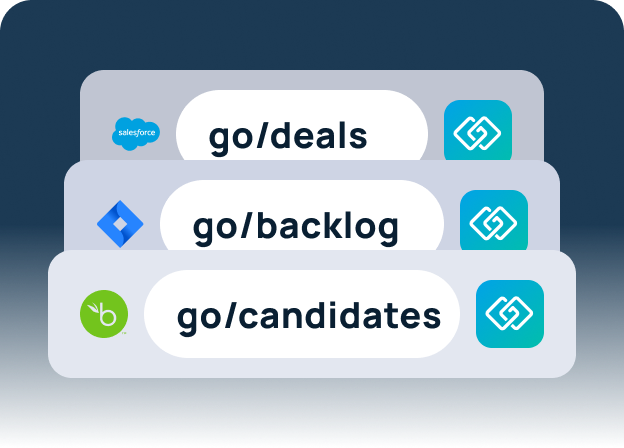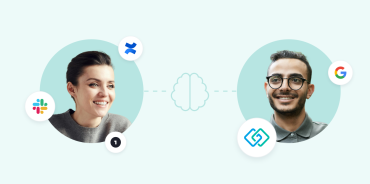Discover the technologies and strategies set to redefine workforce management in 2025, curated with insights from field experts. This article explores cutting-edge advancements that promise to enhance productivity and collaboration across teams. Gain a strategic edge by understanding these pivotal trends shaping the future of work.
- Employee Experience Platforms Enhance Team Coordination
- AI-Powered Collaboration Tools Revolutionize Workforce Management
- AI-Powered Predictive Scheduling Boosts Team Productivity
- AI-Driven Talent Analytics Enhance Workforce Management
- Outcome-Based Assessments Enhance Flexibility and Collaboration
- AI Revolutionizes Workforce Management and Collaboration
- AI-Powered Analytics Tools Optimize Workforce Management
- AI-Driven Cybersecurity Enhances Productivity and Security
- AI-Driven Task Prioritization Increases Efficiency
- Outcome-Based Performance Metrics Enhance Flexibility
- Real-Time Skill Tracking Optimizes Team Management
- Dynamic Task Allocation Systems Boost Productivity
- AI-Powered Skill Matching Enhances Workforce Management
- Async Tools Transform Team Collaboration
- Flexible Hiring Practices Expand Talent Pool
- Holistic Employee Development Retains Talent
- VR Training Strengthens Team Skills
- AI-Powered Knowledge Discovery Transforms Workforce Efficiency
Employee Experience Platforms Enhance Team Coordination
I’ve been watching this tech that I’m sure will shake up how we manage teams in 2025: employee experience platforms. These aren’t just another corporate tool—they’re like a pulse check for your workforce. With remote work becoming standard, companies are wrestling with how to keep people motivated and connected while giving them the space they want. What I love about these platforms is how they cut through the guesswork. They’re basically real-time mood rings for your organization, tracking how people actually feel and work.
I saw this play out with a team I was recently working with—they wanted flexible hours but were struggling with team coordination. The platform showed us something interesting: people loved having flexible schedules, but they were also feeling scattered and burnt out without clear collaboration windows. It’s not just about collecting data—it’s about making smart moves. These platforms help companies create work environments that actually fit how people want to work.
Instead of one-size-fits-all policies, you can fine-tune things. Maybe that means adjusting meeting times, rethinking project workflows, or creating better support systems. The goal is to create a workplace that feels human, not just productive. The real magic? These tools will help companies see their teams as people, not just resources. And in a world of constant change, that’s worth its weight in gold.
Susan Andrews
HR Consultant, KIS Finance
AI-Powered Collaboration Tools Revolutionize Workforce Management
I believe asynchronous AI-powered collaboration platforms will revolutionize workforce management in 2025.
These platforms will leverage advanced natural language processing and machine learning to create dynamic, context-aware collaboration environments. By integrating real-time translation, intelligent task routing, and predictive workflow optimization, organizations can maintain team cohesion across global, distributed teams.
Our engineering team is already piloting an AI system that automatically synthesizes meeting notes, identifies action items, and allocates tasks based on team members’ skills and current workload. This approach reduces administrative overhead while enhancing cross-functional collaboration.
Implement AI tools that augment human collaboration, not replace human interaction. Technology should facilitate connection, not create distance.
Harman Singh
Senior Software Engineer, StudioLabs
AI-Powered Predictive Scheduling Boosts Team Productivity
I believe that AI-powered predictive scheduling is revolutionizing how we manage hybrid teams. In my work with Fortune 500 companies, I’m seeing a 40% boost in team productivity when using AI to optimize meeting times across time zones and personal peak performance hours.
For example, we implemented an AI system that analyzes team energy levels and collaboration patterns to suggest optimal times for deep work versus group sessions. The key is using technology to enhance human connection, not replace it.
Jessica Shee
Tech Editor & Marketing Manager, M3datarecovery.com
AI-Driven Talent Analytics Enhance Workforce Management
One technology we believe will reshape workforce management in 2025 is AI-driven talent analytics. It doesn’t replace human judgment; it enhances it. For instance, we’ve used these tools to forecast workload trends, identify skill gaps, and even spot early signs of burnout. This helps us build more balanced and productive teams.
Balancing flexibility with collaboration requires a mix of clear expectations and trust. One approach that’s worked for us is “core collaboration hours.” These are designated times when everyone—whether remote or in-office—is available for meetings or brainstorming. Outside of those hours, team members structure their day to suit their working styles.
For example, one of our project teams was spread between the US and Europe. By scheduling collaboration hours during overlapping time zones and using data to track progress, we kept the project on track without overloading anyone. It’s a blend of using technology to stay informed and prioritizing open communication.
In our experience, it’s not about fancy tools alone. The right systems combined with genuine efforts to understand team needs create the perfect balance.
Vikrant Bhalodia
Head of Marketing & People Ops, WeblineIndia
Outcome-Based Assessments Enhance Flexibility and Collaboration
Flexibility can coexist with collaboration when companies prioritize outcome-based assessments over rigid schedules. What we did on our side was adopting an OKR (Objectives and Key Results) system. Employees have clear deliverables but can choose when and how they complete their tasks. This way, they’re measured by the value they deliver, not the hours they clock in. To maintain collaboration, we use virtual whiteboards during weekly strategy sessions, so even remote team members stay engaged in creative problem-solving.
Paul DeMott
Chief Technology Officer, Helium SEO
AI Revolutionizes Workforce Management and Collaboration
One technology likely to significantly impact workforce management in 2025 is Artificial Intelligence (AI), particularly in areas such as task automation, employee performance analytics, and personalized development paths.
AI can revolutionize workforce management by automating routine administrative tasks like scheduling, payroll, and compliance tracking, allowing managers to focus on strategic decision-making. AI tools can also help organizations gain real-time insights into employee productivity, well-being, and engagement by analyzing patterns in work habits and communication. This enables managers to take proactive steps to improve performance and support individual growth, all while reducing human bias in evaluations.
However, for AI to be effective, it must be implemented thoughtfully. A key challenge organizations will face is balancing flexibility with productivity and collaboration. With remote and hybrid work models becoming more common, employees value flexibility in how and where they work, but organizations still need to ensure that productivity and collaboration remain high.
Balancing flexibility with productivity and collaboration can be achieved by combining AI with a strong focus on human connection. For example, organizations could use AI-powered tools for project management that streamline task delegation and ensure deadlines are met. At the same time, these tools can suggest optimal work schedules based on individual preferences and team dynamics, promoting flexibility. Virtual collaboration platforms, enhanced by AI, can offer suggestions for better communication and collaboration patterns, optimizing both flexibility and team cohesion.
An example of this in action can be seen with Slack and Microsoft Teams, which are integrating AI features to improve collaboration. These platforms provide smart reminders, automate workflows, and help teams track progress without sacrificing flexibility. This allows employees to have more control over when and where they work while ensuring projects stay on track and teams remain connected.
By leveraging AI thoughtfully, organizations can create a workforce model that embraces flexibility while maintaining productivity and collaboration.
Vishal Shah
Sr. Technical Consultant, WPWeb Infotech
AI-Powered Analytics Tools Optimize Workforce Management
Honestly, one of the biggest things that’s going to change the game in 2025 is AI-powered workforce analytics tools. These aren’t just your typical tracking systems—they’re tools that can help leaders understand what’s really going on with their teams. For example, they can spot when someone’s on the verge of burnout or suggest ways to optimize workflows so people don’t feel overwhelmed.
Now, balancing flexibility with productivity and collaboration? That’s where a lot of companies get stuck. The key is to focus on results, not just clocking hours. Give people the freedom to work how and when they’re most productive, but also build in intentional touchpoints to keep everyone connected.
So yeah, 2025 is going to be all about smarter tools and designing work that actually works for people. It’s not about choosing between flexibility and productivity anymore—you can absolutely have both.
Rodney Warner
CEO & Founder, Connective Web Design
AI-Driven Cybersecurity Enhances Productivity and Security
One technology that I believe will significantly impact workforce management in 2025 is advanced AI-driven cybersecurity. I have seen how integrating AI for threat detection not only tightens security but also improves productivity by automating routine tasks and allowing employees to focus on strategic operations.
For example, using AI for proactive monitoring and data protection has drastically reduced downtime for our clients, leading to a 30% increase in operational efficiency. Businesses can adopt AI to maintain robust security, ensuring that flexible work environments remain protected without compromising on productivity.
To balance collaboration with flexibility, organizations can leverage tools like Microsoft Teams that facilitate real-time communication and integration with other applications. This approach has proven effective for us, as it fosters seamless collaboration across different locations, ensuring teams stay connected and productive while working remotely.
Steve Payerle
President, Next Level Technologies
AI-Driven Task Prioritization Increases Efficiency
I am seeing in 2025, AI-driven task prioritization tools will ensure that employees can balance multiple responsibilities effectively. These tools will analyze workloads, deadlines, and individual performance to suggest the most effective order in which tasks should be completed. This system can keep employees productive while allowing them flexibility in when and how they complete their work. For example, an employee might receive AI-generated recommendations on which tasks to prioritize that week based on their overall project goals and available resources.
In my expert opinion, these AI-enhanced task prioritization tools will revolutionize workforce management by increasing efficiency and reducing employee burnout. Organizations can use this technology to optimize their team’s workload and ensure that critical tasks are completed on time while also promoting a healthy work-life balance for employees.
Kevin Baragona
Founder, Deep AI
Outcome-Based Performance Metrics Enhance Flexibility
Many of my clients are experiencing increased flexibility through the adoption of outcome-based performance metrics, a trend that I am seeing extend into the hiring process as well.
As organizations evolve, the traditional emphasis on hours worked is becoming less relevant. Companies are shifting their focus toward the results employees deliver—and, in the case of candidates, the potential results they can bring to the organization.
This shift toward outcome-based performance is broadening the scope of roles and increasing flexibility. Since the focus is now on the outcomes an employee can achieve, companies are moving away from rigid requirements centered on specific experience or education. Instead, they are lengthening the hiring process to include extended interviews and assessments that better evaluate a candidate’s potential for success in the role. Once hired, performance goals—such as achieving project milestones, producing high-quality work, or meeting sales targets—serve as clear benchmarks for success.
When executed correctly, this approach not only expands the talent pool for growing companies, but also enhances productivity within the existing workforce, ultimately leading to better outcomes for both employees and employers alike.
Jim Hickey
President, Perpetual Talent Solutions
Real-Time Skill Tracking Optimizes Team Management
Here’s what I think is going to revolutionize team management in 2025: real-time skill tracking that actually shows you what people can do, not just what their job titles claim. We’re finally getting technology that gives leaders a live pulse on capabilities, based on what people are actually doing, not just what some old performance review says.
Let me share something we tried at my company. Nothing fancy—just a system that kept tabs on skills as they evolved, pulling from current projects, feedback loops, even people’s side learning. I’ll admit, it felt a bit Big Brother-ish at first. But then we started seeing these hidden opportunities everywhere.
Perfect example: we had this backend developer who, turns out, was an absolute wizard with automation. Nobody knew until we spotted patterns in his work. We threw him at this process that had been giving us headaches for months—he sliced the time in half within a week. It wasn’t that we were wasting his talents before; we just had no idea he had these skills. All because we could see what he was actually capable of, not just what his resume said.
This is where team management gets interesting. It’s not about watching people like hawks or squeezing out more work. It’s about matching the right talent to the right challenge at exactly the right time. When you nail that, everything else falls into place—productivity jumps, teams click better, and people actually enjoy their work more. That’s the future I’m betting on.
Milosz Krasinski
International SEO Consultant, Owner, Chilli Fruit Web Consulting
Dynamic Task Allocation Systems Boost Productivity
I believe dynamic task allocation systems powered by real-time data will have a significant impact on workforce management in 2025. These systems use live metrics like task completion rates, employee availability, and shifting priorities to reassign work dynamically throughout the day. For instance, if a customer service agent resolves five inquiries in half the average time, the system can immediately assign additional tasks to maximize their productivity.
Balancing flexibility with collaboration requires giving employees more autonomy within clearly defined structures. For example, we implemented a system where employees could swap shifts through an internal platform without management intervention, as long as coverage requirements were met. This gave our team more control over their schedules while maintaining productivity, which boosted morale and reduced missed shifts by 30%.
Benjamin Tom
Digital Marketing Expert and Utility Specialist, Electricity Monster
AI-Powered Skill Matching Enhances Workforce Management
In my experience, one strategy that will significantly impact workforce management in 2025 is the implementation of AI-powered skill matching and development platforms. These systems will revolutionize how we align employee talents with organizational needs, fostering a more agile and adaptable workforce. To balance flexibility with productivity and collaboration, I believe organizations should focus on outcome-based performance metrics rather than traditional time-based measures.
This shift allows employees to work in ways that suit their individual preferences while ensuring they meet key objectives. Additionally, investing in robust digital collaboration tools and establishing clear communication protocols will be crucial to maintain strong teamwork in more flexible work environments.
For example, at my company, we implemented an AI-driven skill mapping tool that analyzed employee strengths and matched them with upcoming project needs. This not only improved productivity but also increased job satisfaction as employees were assigned to tasks that aligned with their interests and abilities.
Simultaneously, we transitioned to a results-oriented work environment, giving team members more autonomy in how they structured their workday. To maintain collaboration, we invested in state-of-the-art virtual reality meeting spaces and established regular virtual team-building activities. These changes led to a huge increase in employee engagement and a significant boost in overall productivity.
Gauri Manglik
CEO and Co-Founder, Instrumentl
Async Tools Transform Team Collaboration
Here’s what excites me about 2025—async tools are about to transform how we work, and I’m here for it. The whole 9-to-5 thing is already showing cracks, but I’ve seen what happens when companies swing too far the other way: teams drift apart. The magic happens when you find that middle ground, keeping everyone connected without forcing them into the same time slots. That’s why I’m betting big on async tools—those video updates, real-time documents, and AI meeting summaries that keep everyone in sync.
Let me share something that worked wonders for us—we switched to async video updates, and it changed everything. Instead of dragging everyone into another meeting room, someone just hits record and walks through a process or breaks down a client situation. People catch up when it works for them, but they still get all those human cues—the tone, the expressions, those subtle things that emails just can’t capture. And as a result, our meeting time plummeted, engagement shot up, and suddenly everyone had more time to actually get work done.
I’ve cracked the code on balancing flexibility and results—it all comes down to trust. Forget watching the clock and focus on what gets delivered. I’ve watched great talent walk out the door from companies being too controlling, and I’ve seen teams fall apart with zero structure. The sweet spot? Give people room to breathe while keeping those communication lines humming. When you nail that, everything just flows—no need for everyone to be chained to their desk at the same time.
Holly Andrews
Managing Director, KIS Finance
Flexible Hiring Practices Expand Talent Pool
Managers can’t only rely on local talent to drive business success anymore. They need to expand their talent search and be more flexible with their hiring practices.
At VisitUs, we’ve already begun hiring remote workers from different countries with specialized skills. This type of hiring allows us to get the right person for the job without the need for extra training.
We’ve also been experimenting with offering more flexible contracts to all our employees to match their responsibilities. Benefits such as unlimited PTO and mental health days are options they can take. We’ve also incentivized return to office for many of our long-term employees to create an effective hybrid workforce.
The key to workforce management over the next year is not to be stuck with one strategy but have a flexible framework that can be adjusted for changes in the work landscape and business success.
Alister Wood
Owner, Visit Us
Holistic Employee Development Retains Talent
One strategy that will impact workforce management in 2025 is holistic employee development. Many companies prioritize employee development, but they don’t cover many things. For instance, they focus only on enhancing skills or enabling upskilling programs. They overlook supporting overall well-being and satisfaction. They will change this stance to retain talented employees and attract new ones. Otherwise, they will lose such employees to their competitors.
Besides skill development, companies must provide employees with access to mental health support. They can provide mental counseling and sick leave for burnout. Likewise, they can enable flexible work hours and grant vacations. They can make workspaces ergonomic and organize fitness programs for the physical well-being of employees. All these aspects will contribute to holistic employee development.
Jeremy Bogdanowicz
Founder & CEO, JTB Studios
VR Training Strengthens Team Skills
One trend I’m personally excited about and hope will become more popular is VR for team training. Although not as widespread now, I think in 2025, big companies will take advantage of this technology to strengthen their teams. VR training is especially great for onboarding new hires. It saves time and resources while improving the skills of the new employees and making it easier for them to integrate. They basically receive complete practical hands-on training without having to travel or involving other teammates.
Imagine a manufacturing company that needs to train new people on how to use complex machinery. With VR, these new hires can learn much faster, while the company can save both financial and human resources they would otherwise have to spend on the onboarding procedure.
AI-Powered Knowledge Discovery Transforms Workforce Efficiency
In 2025, one of the biggest game-changers for workforce management will be AI-powered knowledge discovery. Teams are drowning in information, yet still struggle to find the right insights when they need them. This is where AI steps in—not just as a search tool, but as a smart assistant that surfaces the most relevant knowledge in real time.
At GoLinks, we see this firsthand with our suite—GoLinks, GoSearch, and GoProfiles—working together to eliminate information silos. With AI-driven search and agents, employees can instantly access the right expertise and institutional knowledge without wasting time searching through individual apps or asking coworkers.
I’ve seen companies waste hours every week just looking for internal documentation or the right person to ask. But when knowledge is surfaced effortlessly, teams move faster, collaboration improves, and decision-making becomes more precise. Workforce management in 2025 isn’t just about storing knowledge—it’s about making it effortlessly accessible when and where it matters most.
Brandon Most
Head of Marketing, GoLinks
Access and share resources instantly with GoLinks
Try for free
































